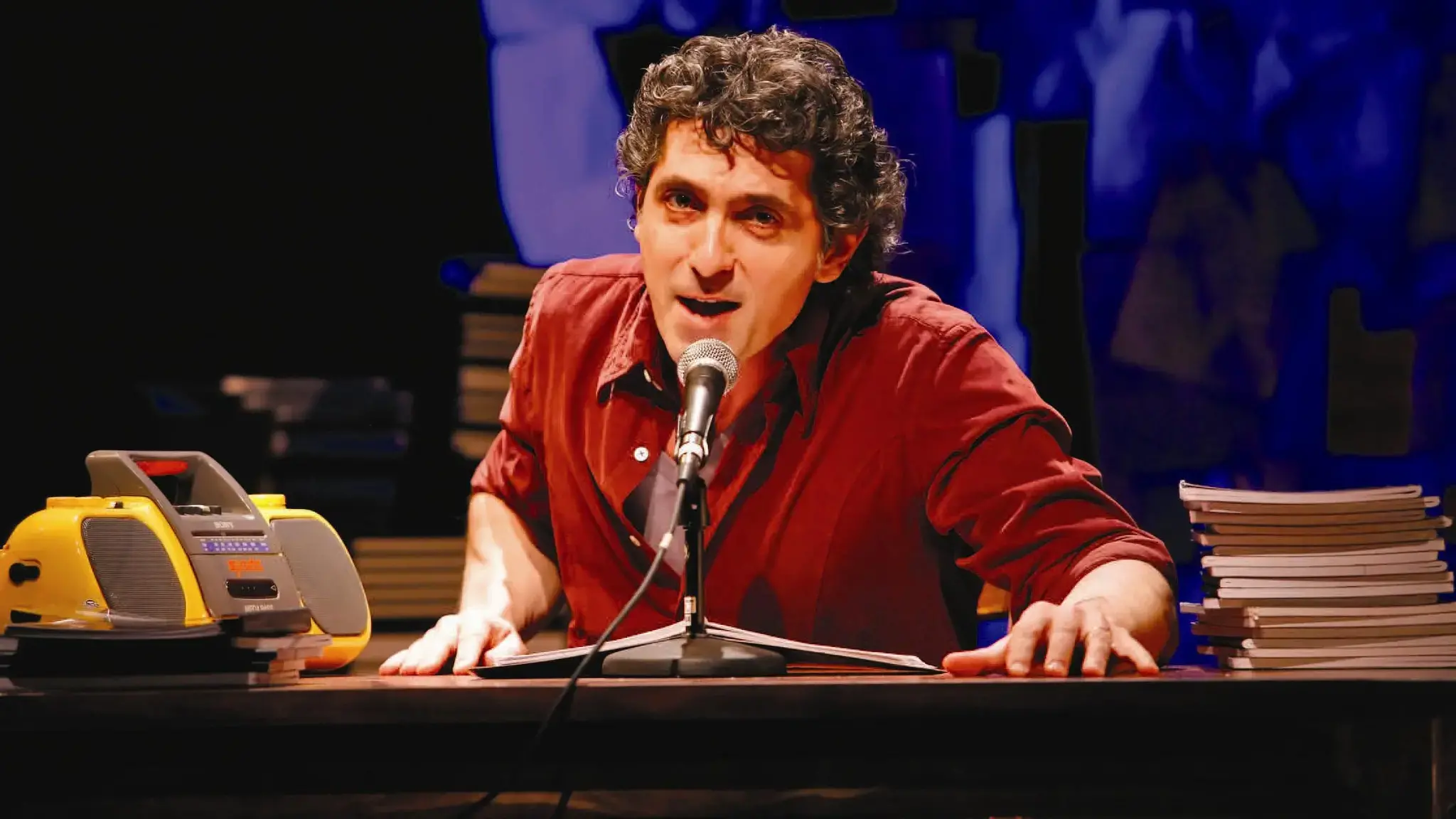

In the second segment of our three-part conversation between Center Visiting Artist Ain Gordon and Center Executive Director Paula Marincola, they discuss his work throughout his residency period, including his role in the development of Push Me, Pull You, an ongoing project on (co-) authorship in cultural production, led by the Center’s content specialists. “Essentially, I dramaturged,” Gordon says. In addition, they speak to the impact of Gordon’s physical presence at the Center, including his office hours, which allowed him to speak with staff members about anything on their minds: “The office hours were a way to remind me, more than anyone else, to just show up without a destination.”
Paula Marincola: I want to talk about the dialogically based work that you’ve done here in the Center, and what some of the outcomes have been. I’m thinking right now about the tier of our staff called specialists—people who have deep content knowledge in the various areas that we fund: history, dance, music, visual arts, theatre, and management. They had also been siloed in their work. I brought them together as a group and I gave them a charge to contribute to building the intellectual property of the Center by thinking about what our work together is meant to do, rather than simply discipline by discipline.
They were taking some time to get to know each other, which was interesting in and of itself—that they had inhabited the space together for a few years and they didn’t necessarily know each other. Eventually I asked you to meet with them. And I think something incredibly fruitful came out of your interaction with them.
Ain Gordon: Well, first of all, I do think they are more siloed because unlike the directors, they didn’t have the shared task of guiding the Center along. So they didn’t have a built-in, work-centered reason previously to be in dialogue with each other. That was the first thing.
The second thing grew out of a conversation we had at one of the directors’ meetings. I had raised at some point earlier on this question of authorship and what is authorship in contemporary form? It stemmed from a conversation about the word “excellence,” which is part of the Center’s mission. What is excellence in work that is improvisational? What is excellence in work that is archival? What is excellence in work that is group generated? All of these questions according to whom and when. And that led us into this question of authorship—what does authorship look like? How many kinds are there now? And does it help us to always be lauding a single author?
So I went to the specialists’ meeting. They were circling many thematic questions but finding it hard to reach consensus among so many minds, because they had never had to do that before, I think. Among their potential questions were a host of ideas relating to the very questions I had raised in our talk at the directors’ meeting. So I offered the many-headed conversation of authorship, which is itself a question about many heads—
PM: As an analogy for—
AG: As an analogy for both their problem and their questions. And I suggested that they should give up trying to reach consensus and agree to be many authors—and to therefore, in fact, model their question in their process. So that became the Push Me, Pull You project.
But it’s been interesting all along the amount of times—and they say it now themselves—when I have had to say, “Wait a minute, this is going wrong because we’re trying to all agree on it. We don’t have to agree. We have to jump off each other’s investigation and refract it and add another way of investigation. This is not a monograph.”
PM: Well, I was amazed at the chemistry among the group, and the growing collaborative ease from when I first threw them into the deep end to when I asked you to join their conversation.
AG: Essentially, I dramaturged.
PM: You did indeed. I also want to talk about some of the less tangible ways you’re here with us, or the things you do when you come in from New York and you have your office hours.
AG: The drift to being product oriented is very inextricable in our time, including for me. And somewhere into the process here, not long in, I began to think: I’m also making that mistake and trying to make everything I do be a project. So I started instituting office hours thinking, isn’t it my job to actually be here like an artist and refract what goes on, not to create more product?
The office hours were a way to remind me, more than anyone else, to just show up without a destination, although I tend to over-schedule my time anyway. That’s just me. So there is a whole lot of stuff going on with my residency that no one will see from the outside, which seems okay to me. I’m in conversation all the time with directors and specialists. I throw my artistic monkey wrench into the process and say, “What about, what about?” A lot of it has been about making the disciplines deal with each other, making the disciplines offer to each other the knowledge that they have in their specificity and showing how it applies to someone else, and how it expands the thinking of people in other disciplines to hear the tools and terminology used to solve the same problems.